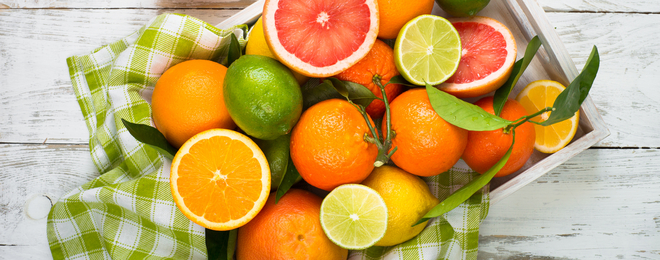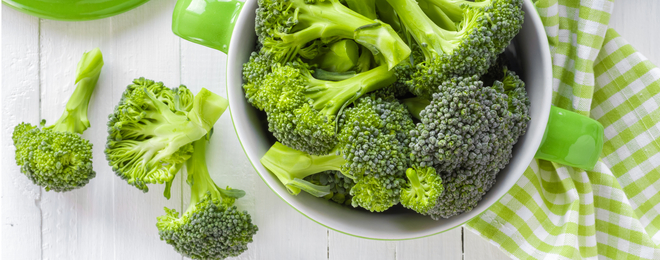FIBROIDS DIET PLAN: HOW TO REDUCE YOUR RISK FOR FIBROIDS

Fibroids are increasingly common and are one of the leading causes for hysterectomies. According to Medical News Today, fibroids can affect at least 20% of all women at some point in their lives. While the cause for fibroids is not fully understood, lifestyle factors such as diet, physical activity, and mental status may pay a role in a woman's chances for developing them1. With this in mind, a fibroids diet plan could potentially help in reducing your risk. Take a look below to learn more!
What Are Fibroids?
Fibroids are benign tumors that grow in the uterus. They are made of smooth muscle cells and fibrous connective tissue2. They can vary in size—some may be as small as a peanut while some may grow as large a grapefruit.
For the most part, these tumors can go unnoticed and show no symptoms. It's also very unlikely for them to become malignant. According to UCLA Health, in 99% of fibroid cases, the tumors are non-cancerous and do not increase a woman's risk for uterine cancer.
In some instances where women do experience symptoms, they may have heavy menstrual bleeding.

Other symptoms may include:
- Backaches
- Constipation
- Discomfort or swelling in the lower abdomen
- Frequent urination
- Pain during sex
- Pain in the legs
What are the Causes and Risk Factors for Fibroids?
As mentioned, the cause for fibroids isn't clear. However, research indicates that estrogen and progesterone seem to promote fibroid growth3.
Researchers also suspect that heredity may be a factor. As such, women who have a family history of fibroids are more susceptible to developing them. Compared to other groups, it also appears that African American women have a higher risk for fibroids.
Fibroids can happen at any age; however, they are more common in women between 30 and 40 years of age4.
Fibroids Diet Plan: What May Help
While research isn't extensive on the causes for fibroids, there have been studies that have looked into how diet may affect their growth. If you're concerned about developing them, talk to your doctor about a fibroids diet plan to help reduce your risk.
If prevention is top-of-mind for you, here are some things to consider for a fibroids diet plan:
1. Fruit can make a difference

A study by Wise and colleagues suggests that women who have a higher intake of fruit have lower chances of developing fibroids. Specifically, they observed that citrus fruits made a bigger difference. However, these findings are still in their infancy and further research is still required.
2. Ensure you get enough Vitamin D
In 2013, a study by Baird and colleagues found a correlation with sufficient vitamin D intake and a reduced risk of fibroids in Caucasian and African American women. Specifically, they observed that "women with sufficient vitamin D had an estimated 32% reduced odds of fibroids compared with those with vitamin D sufficiency."
You naturally get vitamin D from the sun. However, long winter months and areas where you don't see the sun as often can make it tricky to get your daily dose of vitamin D. If you're deficient in this vitamin, consider taking a supplement. You can also incorporate certain foods in your diet to ensure you're getting this vitamin. Fortified cereals, certain types of mushrooms, and fatty fish like salmon can all help you get more vitamin D!
3. Eat more greens

Yang and colleagues investigated whether a vegetarian diet correlated with a reduced risk of fibroids. They observed data from a case-controlled study conducted in Southeast University Zhonga Hospital.
These cases involved two groups of women. One group included 600 women whose clinical diagnosis dated back no more than one year, and the other one included 600 women who had no fibroids. The evidence from this investigation indicated that a high consumption of a variety of vegetables appears to be a protective factor for uterine fibroids. Specifically, this included broccoli, cabbage, Chinese cabbage, tomatoes, and apples. With this in mind, the researchers recommend a greater intake of fresh fruits and cruciferous vegetable to help reduce your chances for fibroids. Another study by Yuan and colleagues also indicated that vegetable and fruit intakes helped reduce the risk of fibroids. Their study also supported other findings wherein regular exercise and low BMIs also contributed to a lower risk of developing fibroids. Specifically, their study indicated that premenopausal women with higher BMIs have a higher risk. There are other incentives to incorporating more fruits and vegetables in your diet. Read this article about the nutritional benefits of healthy fruits and vegetables for a better overview!
4. Excess meat consumption could increase your risk
According to Mayo Clinic, excess meat consumption appears to increase a woman's risk for developing fibroids. Chiaffarino and colleagues found that women who consume beef and ham frequently are more likely to develop fibroids. They also found that a high intake of green vegetables appear to have a more positive effect on preventing fibroids.
5. Cut back on alcohol
A study by Nagata and colleagues found that even a low alcohol intake had a significant positive association with fibroids. Their finding is conclusive with two other studies, namely the Nurses' Health Study and the Black Women's Health Study.
Treatment Options

If you do happen to be diagnosed with fibroids, know that there are many treatment options available. Depending on how severe your symptoms are, treatments can vary from medications to surgical removal. Be sure to talk to your doctor about the best option for you. Some examples of medical treatments include:
- Tranexamic acid tablets: Used for reducing blood loss.
- Anti-inflammatory medicine: These usually include non-steroidal anti-inflammatory drugs to reduce pain.
- The birth control pill: Used to make periods lighter and to balance hormones.
- Gonadotropin releasing hormone analogues: This medication aids in shrinking fibroids and can also help ease heavy periods, frequent urination, and constipation.
If surgery is better suited for you, there are options as well. These include:
- Myomectomy: This procedure removes fibroids from the uterus wall, making it a great option if you'd like to have children. However, it may not be suitable for all types of fibroids.
- Hysterectomy: This procedure involves the complete removal of the uterus. It's also the most effective way of preventing the regrowth of fibroids.
This is simply a short overview of options available. To learn more, take a look at this article by NHS on treatments for fibroids.
Final Word
While studies have examined the effects that diet has on fibroids growth, there is still a requirement for more research. Having said this, do speak with your doctor about the right fibroids diet plan for you to help minimize your risk!
IMPORTANT NOTE: The above information is intended to increase awareness of health information and does not suggest treatment or diagnosis. This information is not a substitute for individual medical attention and should not be construed to indicate that use of the drug is safe, appropriate, or effective for you. See your health care professional for medical advice and treatment.